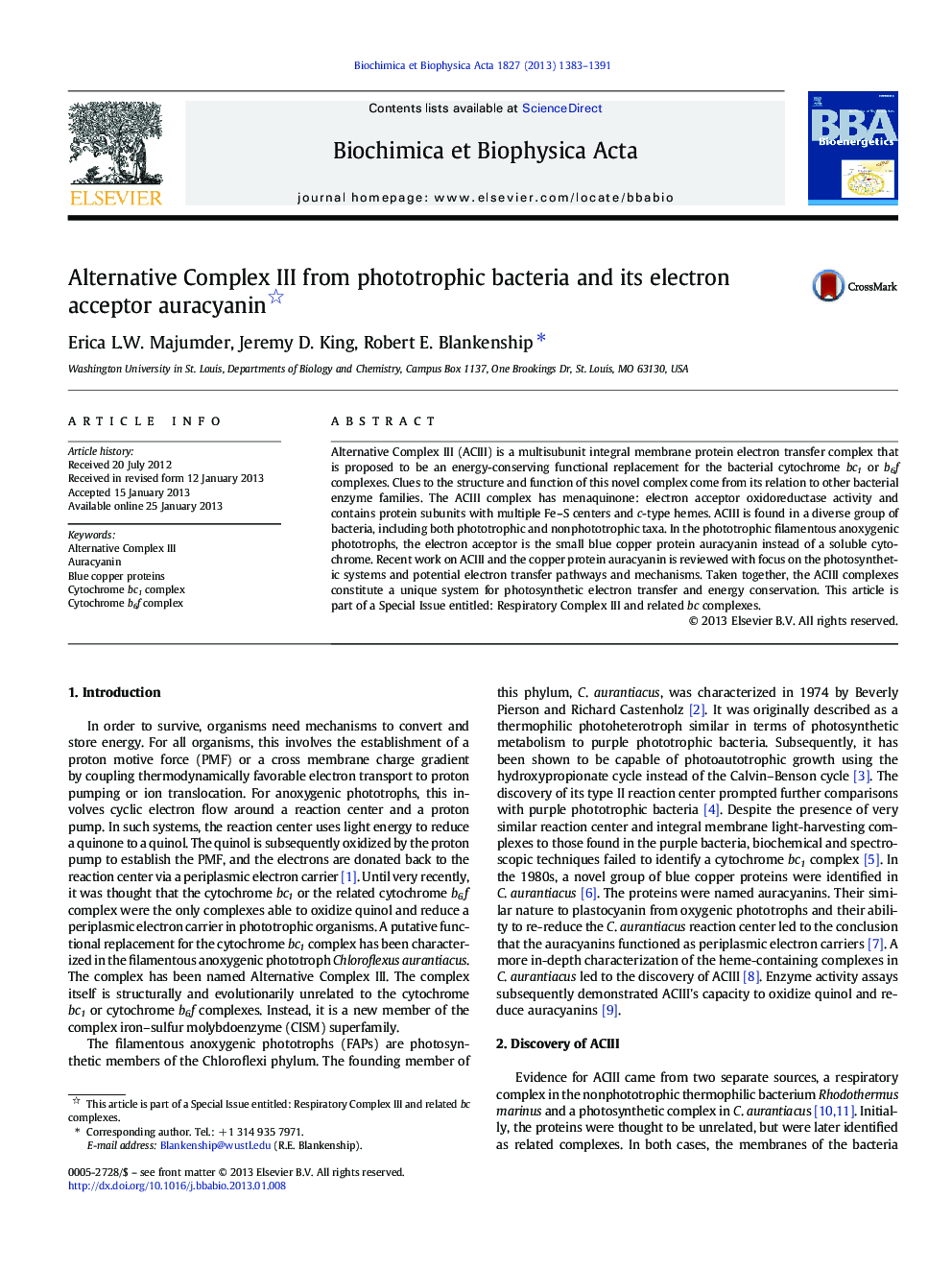| Article ID | Journal | Published Year | Pages | File Type |
|---|---|---|---|---|
| 1942212 | Biochimica et Biophysica Acta (BBA) - Bioenergetics | 2013 | 9 Pages |
Alternative Complex III (ACIII) is a multisubunit integral membrane protein electron transfer complex that is proposed to be an energy-conserving functional replacement for the bacterial cytochrome bc1 or b6f complexes. Clues to the structure and function of this novel complex come from its relation to other bacterial enzyme families. The ACIII complex has menaquinone: electron acceptor oxidoreductase activity and contains protein subunits with multiple Fe–S centers and c-type hemes. ACIII is found in a diverse group of bacteria, including both phototrophic and nonphototrophic taxa. In the phototrophic filamentous anoxygenic phototrophs, the electron acceptor is the small blue copper protein auracyanin instead of a soluble cytochrome. Recent work on ACIII and the copper protein auracyanin is reviewed with focus on the photosynthetic systems and potential electron transfer pathways and mechanisms. Taken together, the ACIII complexes constitute a unique system for photosynthetic electron transfer and energy conservation. This article is part of a Special Issue entitled: Respiratory Complex III and related bc complexes.
► We review the Alternative Complex III oxidoreductase from phototrophic organisms. ► The subunit structures are modeled using related proteins of known structure. ► We review auracyanin, the electron acceptor for Alternative Complex III.
